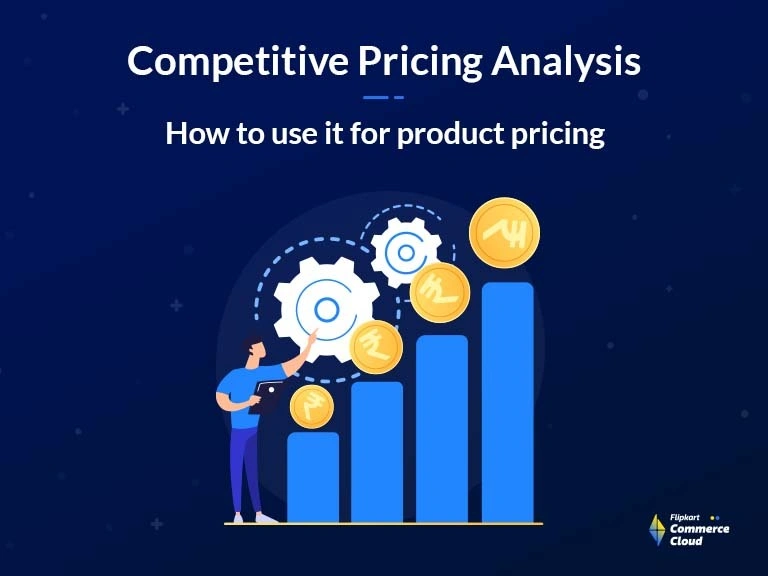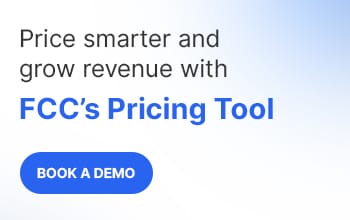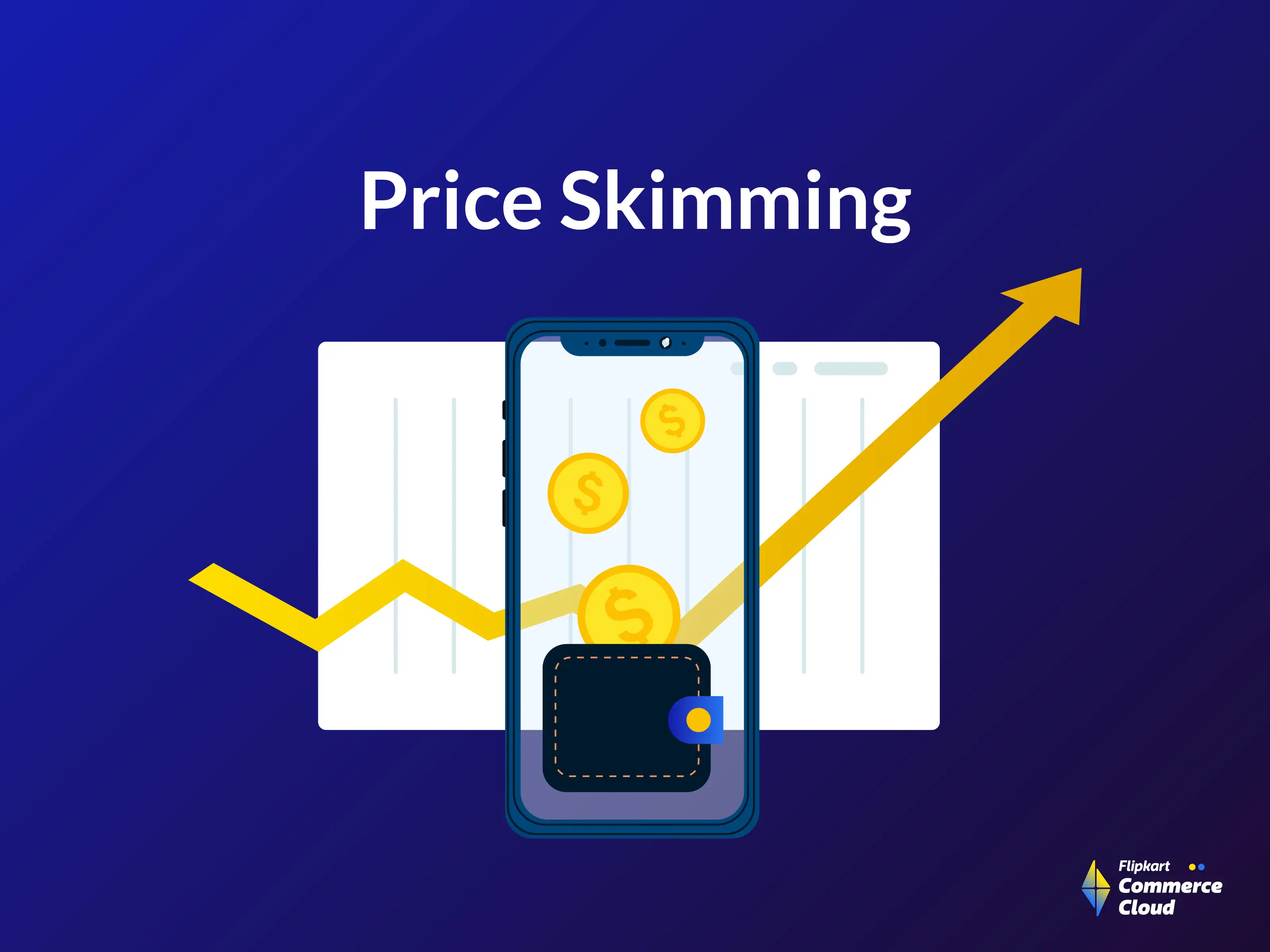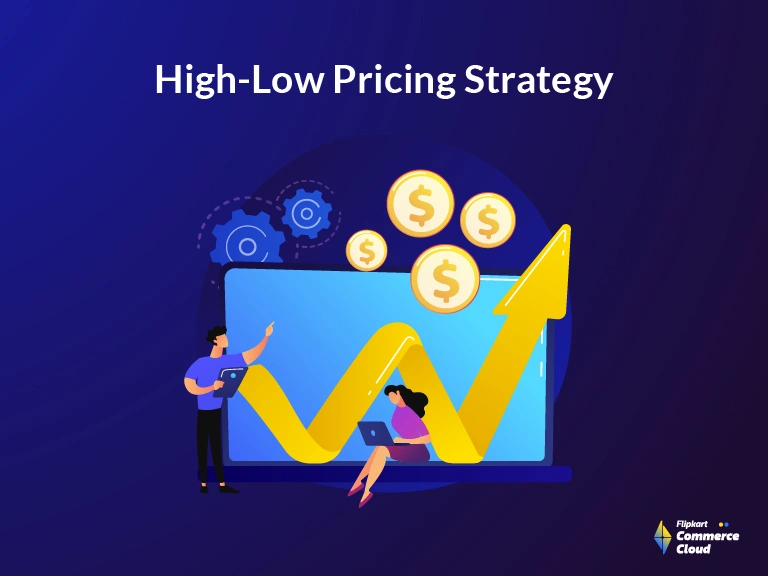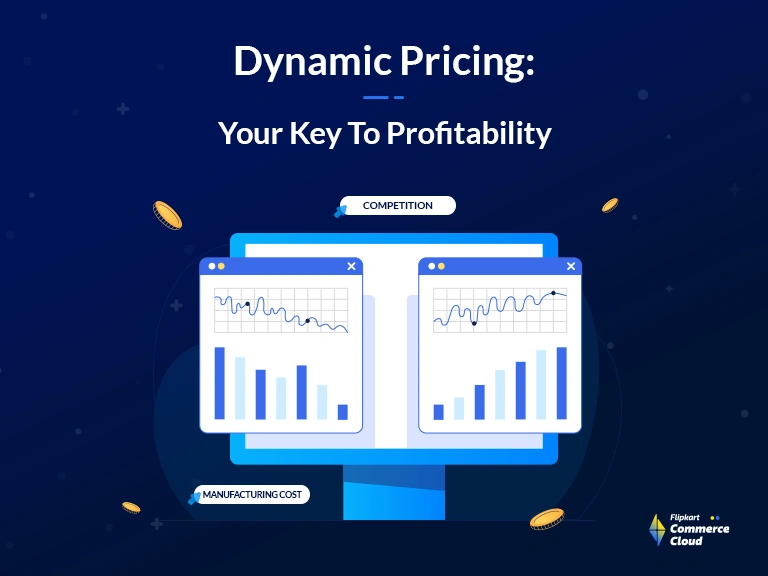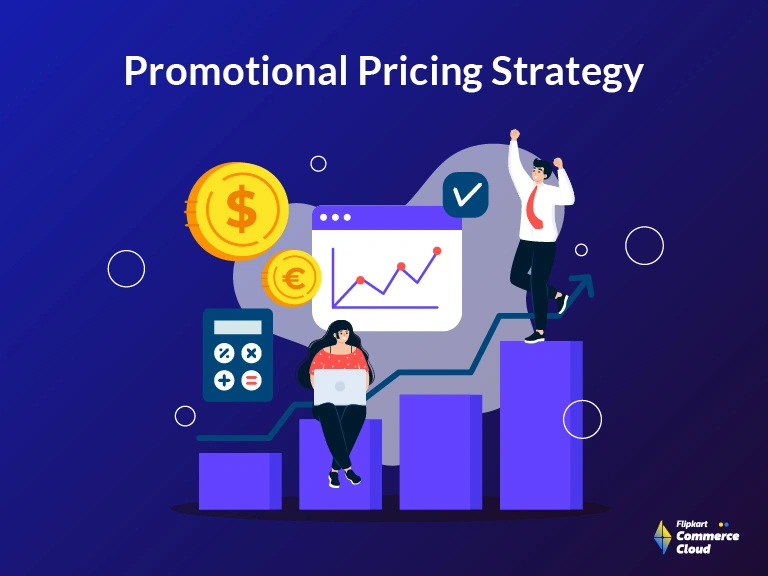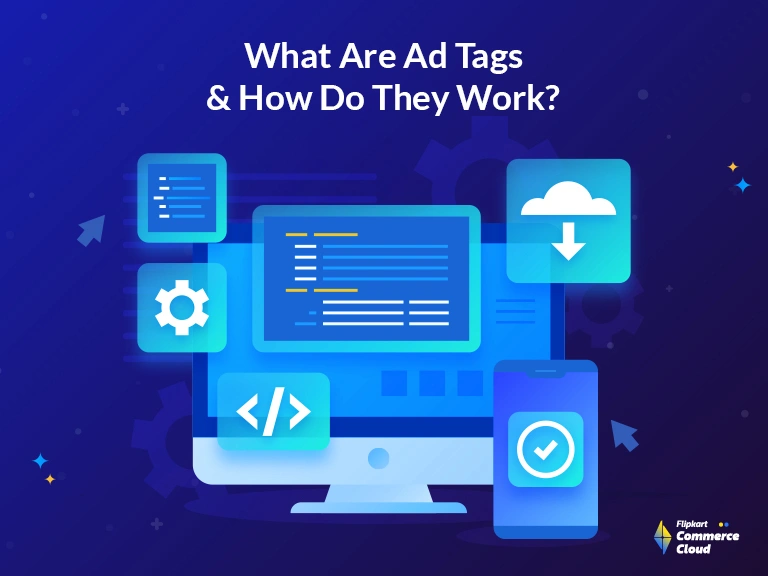Navigating the maze of competition can be daunting. With everyone selling similar products, the temptation is to slash prices to grab attention. However, this short-term fix leads to long-term damage, eating into profits and making a brand seem low value. The smarter move is to use competitive pricing analysis. By understanding what competitors charge and why, businesses can set prices that attract customers while maintaining profitability.
What is competitive pricing analysis?
Competitive pricing analysis is a process that involves gathering and analyzing data on your competitors’ pricing strategies. The process aims to gain insight into the market, identify the strengths and weaknesses of your competitor’s strategies, and use this information to develop your own competitive pricing strategy to get an edge in the marketplace.
Setting the right price for your business is a delicate balance between art and science.
The essence of competitive pricing analysis is mirroring what others do and understanding the broader market landscape. It’s a proactive approach to recognizing patterns, predicting shifts, and positioning one’s business strategically to stay ahead of changes in the market.
Monitoring markets, consumer preferences, and competitors’ strategies is crucial to ensure that pricing remains competitive and profitable.
Benefits of competitive pricing analysis
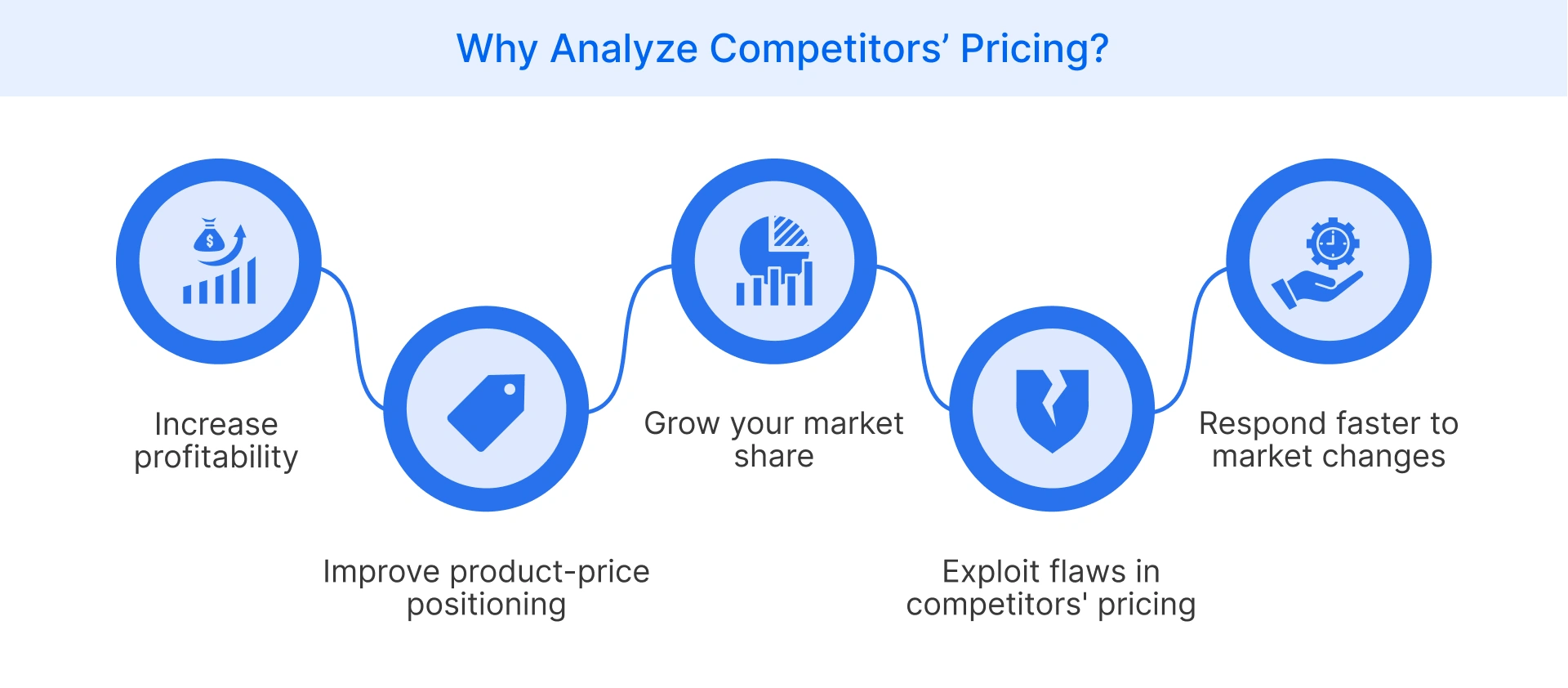
In the retail industry, especially online, prices constantly shift due to various factors, making competitive pricing analysis a must have tool to thrive in the dynamic market. Here are the major benefits of competitive pricing.
Increase profitability
Navigating the market requires a clear understanding of where you stand compared to competitors. Competitive pricing analysis helps businesses discover the right value for their offerings by providing a clear view of the market’s price range.
This insight provides an important advantage – it enables businesses to seize golden opportunities, avoid costly mistakes, and ensure they don’t set prices too low. Businesses can later adjust pricing to increase profits without compromising market position if a product offers a higher quality or more features than its similarly priced competitor.
Improve product-price positioning
Competitive pricing analysis is an invaluable tool for businesses to stay competitive and make informed decisions that align with market trends and financial objectives. For luxury brands, it’s especially important: a small fluctuation in competitor prices can majorly impact brand perception. Without competitive pricing insights, it’s like shooting in the dark as businesses risk misalignment with their target audience and what they seek. With a clear understanding of where competitors stand, companies can strategically anchor their prices and create a balance between quality, cost, and luxury that resonates with customers. This eliminates guesswork and provides businesses with precision and confidence when positioning their products.
Grow your market share
In the strategic game of market positioning, understanding your pricing compared to competitors is essential for future growth and competitive advantage. A thorough competitive pricing analysis can uncover golden opportunities that may not be immediately visible. For instance, reducing prices in certain segments can significantly boost market share. This tactic is often used in retail, where small price changes can greatly impact customer choices and buying behavior.
The ‘loss leader’ approach is a popular strategy retailers employ to attract customers. Pricing an item below market cost can attract customers and encourage them to purchase other products with higher margins. While sacrificing immediate profit on one item, the goal is to amplify overall sales and strengthen the company’s market presence.
Exploit competitors' pricing
Identifying gaps or weaknesses in competitors’ approaches can help businesses fine-tune their pricing and position themselves for maximum advantage. Consider this: if your products offer the same features as your competitors but also come with added business-essential features, you have a unique opportunity to spotlight the superior value you bring to the table.
A well-designed pricing page that compares your offerings with competitors’ can help spotlight the added value of your product and justify why you charge more for it. With a cleverly crafted message and intelligent pricing, you can put yourself one step ahead of the competition. Conversely, if your operations allow for cost efficiencies—due to economies of scale or other factors—you can offer competitive prices. Doing so will allow you to outpace competitors and capture a larger market share through volume sales.
Faster response to market changes when combined with dynamic pricing
In today’s rapidly shifting marketplace, staying ahead requires more than just adaptability—it demands foresight. By combining competitive pricing analysis with effective dynamic pricing strategies, businesses gain real-time market intelligence to anticipate customer preferences and competitor moves.
This fusion enables swift responses to market changes, empowering businesses to drive trends rather than simply reacting. This means businesses can raise prices during high demand and reduce them during lulls for optimal profits, ensuring they remain at the cutting edge of innovation while resonating with their audience.
How to implement competitive pricing analysis for your business?
Analyzing a competitor’s pricing strategies can give you a head start on developing your own pricing strategy. Doing so requires research into your direct and indirect competitors, as well as an understanding of how various factors such as demand, competitors’ offerings, and the broader economic environment can influence your pricing decisions. This can effectively help build customer perceptions of your brand.
But what factors should you consider while analyzing a competitor’s strategy?
Identify and categorize your direct and indirect competitors
Mapping out the competitive terrain is essential in competitive pricing analysis. To begin, you need to take a deep dive into who your direct and indirect competitors are. Start by researching businesses that offer similar products or services to yours. These will be your direct competitors that offer products or services similar to yours and should be monitored closely as they can immediately impact your market share.
Indirect or secondary competitors don’t necessarily mirror your offerings but could provide variants catering to a subset of your audience. Tertiary competitors serve the same audience with related products or services, so it is important to keep an eye on them; they could eventually pivot into your niche or even become potential collaborators.
Understanding and categorizing the competition is essential to creating a data-driven strategy. Direct competitors demand more attention due to their immediate impact on your market share while keeping an eye on secondary and tertiary competitors helps with long-term strategic preparedness.
Determine the source and quality of data
Businesses need accurate data, meticulously defining data parameters, to craft a retail pricing strategy that’s informed and strategically poised to drive growth and profitability. Manual methods such as competitor website checks or in-store visits offer some insight, but they can be time-consuming and may not provide a full picture of the market. Pricing platforms streamline data collection and ensure real-time updates, giving businesses a crucial advantage in this continuously changing environment.
Key data parameters to focus on:
- Stock availability: Gaining insights into the stock levels of competitors can help businesses adjust their prices to maximize both revenue and profits. With a deep dive into product availability across the market and geographies, organizations can gain invaluable information to capitalize on supply-demand dynamics strategically.
- Competitor’s promotional strategies: Merely matching product prices isn’t enough. To remain attractive to your target audience, businesses need to be aware of promotional tactics employed by their competitors, such as discounts, promo codes, and bundled offers. By tracking these strategies, businesses can craft counter-offers that resonate with their target market and product range.
- Price index: This metric provides an invaluable snapshot of how a company’s pricing compares to the market. It serves as a compass for businesses, helping them strategically recalibrate their prices over time and remain competitive.
Define data parameters
Competitive pricing analysis is a blend of meticulous data analysis and strategic foresight. It needs the ‘what’ (data patterns and parameters) and the ‘why’ (extract actionable insights) to determine the ‘how’ (create their unique pricing strategy) to ensure they consistently resonate with their target audience and maintain a robust market position.
Identifying key data parameters to focus on in competitors’ pricing strategies can help businesses anticipate market moves and capitalize on trends.
- Are they positioning their products as premium offerings?
- Do they lean towards promotional or volume-based discounts?
- Are they bundling products to enhance perceived value?
By identifying these patterns, you can pinpoint both the strengths to emulate and the weaknesses to exploit in competitors’ pricing strategies.
Analyzing historical data can also reveal patterns in competitor strategies, like price slashes during specific seasons and recurrent promotions or offers. Keep an eye out for shifts and trends in the market, as a price drop from your competitors might make it necessary for you to follow suit to maintain market share. Regularly review data and adjust your pricing strategy in line with changing markets and consumer preferences – always striving to stay one step ahead of the competition.
Perform pricing analysis with an ML-based pricing platform
Accurately setting competitive prices is crucial to business success, as late updates can lead to significant losses in revenue and profit. To maintain accurate data, businesses must follow the process of manually doing market research, data scraping, and competitive price analysis. However, this process takes a long time and can hurt your brand reputation, leading to revenue loss.
Today’s enterprises rely on AI-driven competitive pricing solution like FCC to combat human errors in pricing. These tools conduct comprehensive competitive market research, leverage mature data quality, scrape accurate competitor data, and provide optimal price recommendations.
The platform uses robust AI-based algorithms to turn raw information into actionable insights, highlighting any discrepancies that may arise. The user-friendly interface offers valuable visuals that facilitate easy decision-making. FCC helps predict the impact of every pricing or promotional campaign based on various factors, such as the retailer’s pricing history, seasonality, customer behavior, and competitors’ actions.
What sets FCC apart is its item segmentation feature, which gauges consumer willingness to pay and adjusts prices accordingly. The platform can simulate the outcomes of various pricing choices, allowing retailers to try different routes before settling on the most optimal one. It further facilitates decision making by notifying you of market shifts and changes in competitor’s strategies in real-time. The outcomes are made more predictable thanks to machine learning and price simulation technologies to ensure businesses reap immediate financial benefits, work with multiple categories, and automate processes to ease the workload.
Implement a competitive pricing strategy
After completing your pricing analysis, you can implement a comprehensive competitive pricing strategy that aligns with your brand’s objectives to position yourself in the market against your competitors.
Here are the strategic pricing approaches you can take:
- Above-the-market pricing: Above-the-market pricing can be a viable strategy for brands that have found a unique niche or offer unparalleled value. This positions the offering as premium, signaling superior quality or exclusivity—but requires careful monitoring of competitor prices and a clear value proposition to justify the additional cost of competitor prices and a clear value proposition to justify the premium.
- Price matching: For businesses aiming to compete primarily on price, aligning with market rates can be an effective strategy. This approach can especially benefit brands with larger market shares or those that offer added value, making their products more attractive to customers. However, to maintain competitiveness, it is important to stay current on market rate changes.
- Below-the-market pricing: Positioning as a cost-effective alternative can be a great way to attract price-sensitive customers. To ensure your brand is perceived as an option that offers excellent value, focus on delivering affordability without compromising the quality of the product or service. This strategy can be especially successful if you introduce loss leaders to your product lineup, giving customers access to high-value products at lower prices.
Competitive pricing is an important part of a comprehensive pricing strategy, but it’s just one piece of the puzzle. Market conditions, production costs, seasonal variations, and brand perception must be considered when formulating a successful pricing strategy.
Facing the challenge of finding a perfect price point? FCC offers a holistic market view, empowering businesses to make informed pricing decisions. You can gauge price sensitivity, compare price ranges across studies, and analyze product features for an all-encompassing 360-degree view. Using AI insights, businesses can remain ahead of the competition by launching products at prices that consumers want, which will drive profitability.
Challenges you might face while performing competitive pricing analysis
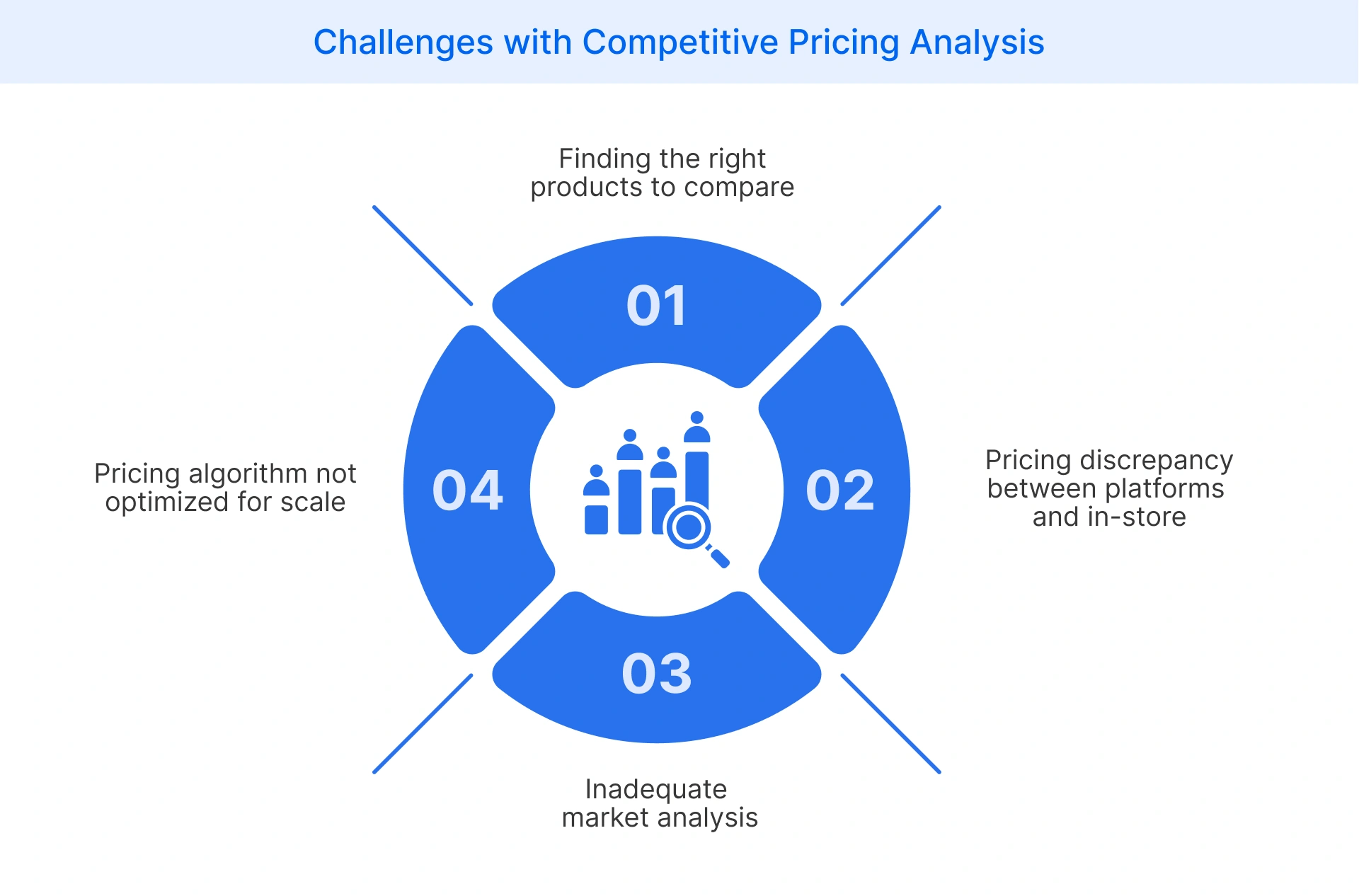
Pricing, while seemingly straightforward, involves a lot of considerations beyond simply balancing profit and losses. It has the power to shape consumer perception, market positioning, and even a company’s competitive advantage.
Here’s a deeper dive into the challenges businesses might face when performing competitive pricing analysis:
Finding the right products to compare
A comprehensive market analysis must go beyond just breadth, encompassing depth as well. While it’s important to compare a variety of competitors, the products being compared should be closely analogous to an apples-to-apples comparison. Such a broad market-wide comparison can be labor-intensive and time-consuming, yet its importance cannot be overstated.
Temporal dynamics must also be considered, as markets can fluctuate depending on seasonal offers and stock availability. For retail sectors, frequent checks must be conducted to ensure accurate comparisons. Ultimately, the scope of analysis should take into account all possible variables to ensure precise results. The tools you employ for price checking can be the difference between accurate insights and misleading data. Relying on outdated tools or manual tools can lead to inaccurate results.
Discrepancies in product pricing across platforms and in-store
The digital age has blurred the lines between online and offline retail. Price discrepancies between brick-and-mortar stores and online platforms are common, so it’s important to understand why they exist. Despite technological advancements, many businesses still rely on manual processes for data collection, resulting in inefficient practices that can’t keep up with dynamic pricing changes.
Creating a competitor pricing strategy is not one-dimensional. It involves understanding where they are selling their products – from their e-commerce site, third-party online retailers, to brick-and-mortar stores – and how much they charge in each channel. Ignoring these will lead to pricing inaccuracies.
Inadequate market analysis
Effective pricing analysis requires comparing like-for-like products. Price is just one factor, and factors such as features, brand reputation, after-sales service, and overall value proposition must all be taken into account to ensure a comprehensive analysis. Overlooking any of these can lead to skewed insights.
Pricing algorithm not optimized for scale
A robust pricing strategy requires foresight and a holistic approach. Instead of isolated decisions for individual products, it must consider competitor pricing across its entire portfolio. Making piecemeal decisions can erode long-term market share and brand equity, leading to inconsistencies in the brand’s value proposition across its portfolio.
Moreover, every pricing decision must consider the broader market context. Without analyzing the existing landscape, your product range may end up being overpriced or undervalued compared to its competitors. This can ultimately reduce its overall value proposition. Adopting a proactive, strategic approach helps ensure consistent and effective pricing actions that maximize customer value and business profitability.
Conclusion
Competitive pricing is more than just numbers – it’s a multi-faceted strategy. Understanding the market dynamics, consumer perceptions, and the competitive landscape can give businesses an edge. Having the right tools and expertise to analyze pricing strategies can help ensure that their prices are competitively set to be profitable while keeping customers interested in their product or service over their competitors. Finding this balance between affordability, customer value and profitability is essential for businesses to succeed in a crowded market.
At Flipkart Commerce Cloud, we understand the complexities of pricing in today’s competitive market and are here to help you make informed decisions. Our cutting-edge tools and industry expertise provide businesses with the insights and guidance necessary to master competitive pricing.
We offer tailored solutions that will ensure your pricing strategy is data-driven, strategic, and aligned with your broader business goals. Elevate your pricing strategy today by connecting with FCC. Book a free demo with our retail expert!
